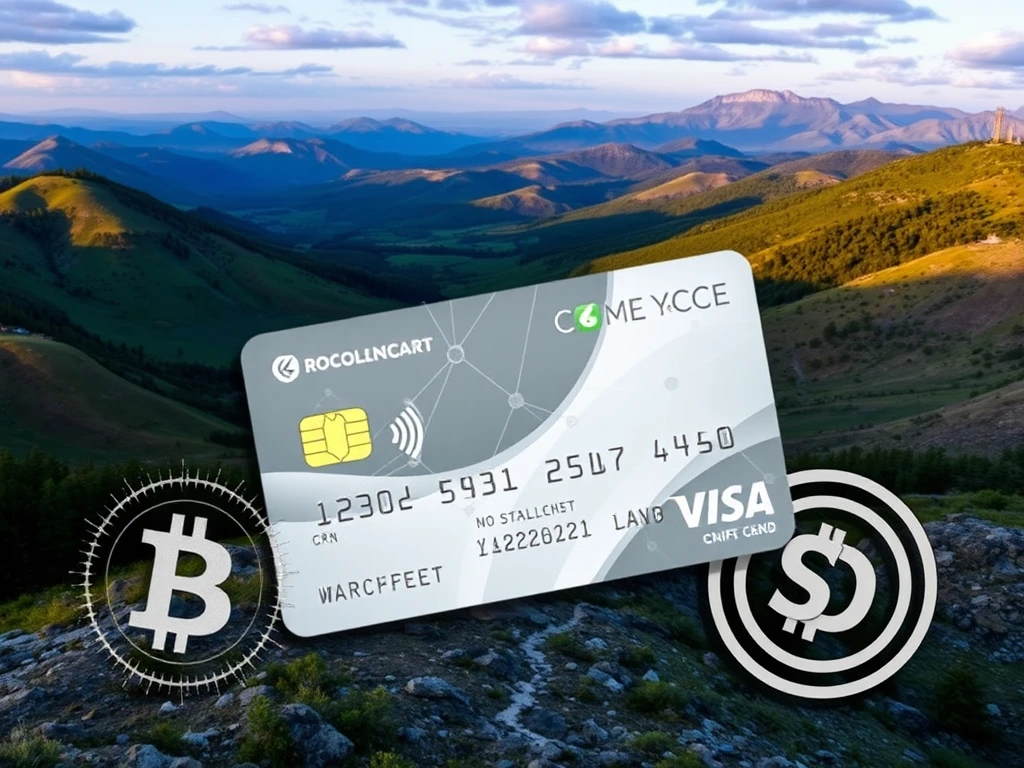Transformative Stablecoin Corporate Cards: Revolutionizing Business Payments

Are you a business looking for more efficient and flexible ways to handle expenses? The world of corporate finance is evolving, and stablecoin corporate cards are at the forefront of this transformation. These innovative cards bridge the gap between digital currencies and traditional spending, offering businesses new levels of control and efficiency. Let’s explore what they are and how they function.
What Are Stablecoin Corporate Cards?
Stablecoin corporate cards are payment cards linked to digital wallets holding stablecoins, such as USDC. Unlike traditional corporate cards tied to bank accounts or credit lines, these cards allow companies to spend their stablecoin holdings for everyday business expenses. They represent a significant step in integrating blockchain technology into mainstream financial systems, enabling businesses to leverage digital assets for operational needs.
This integration is changing global trade by allowing companies to use digital currencies for expenses, from office supplies to travel. These cards convert stablecoins into local currencies instantly at the point of purchase, facilitating smooth transactions anywhere traditional cards are accepted.
How Stablecoin Cards Work for Business Payments
Understanding how stablecoin cards work is key to appreciating their potential. The process is designed to be as seamless as using a regular corporate card, but with a cryptocurrency backend:
- **Funding:** Businesses top up their card’s linked digital wallet with stablecoins like USDC. This wallet can be custodial (managed by a platform) or self-custodial (controlled by the business).
- **Initiating a Transaction:** The card is used at a point-of-sale terminal, just like a standard card. Contactless payments via digital wallets like Apple Pay and Google Pay are also supported.
- **Real-time Deduction:** Stablecoins are deducted from the linked wallet in real time as the transaction occurs.
- **Instant Conversion:** The platform facilitating the card immediately converts the stablecoins to the local fiat currency needed for the purchase. This happens on the backend, invisible to the user at the checkout.
- **Transaction Settlement:** The transaction is processed and settled through traditional payment networks, ensuring the merchant receives fiat currency while the business spends its crypto assets.
This streamlined mechanism makes spending crypto for stablecoin business payments as straightforward as using a traditional card.
Key Advantages of Using Stablecoin Business Payments
Adopting stablecoin business payments through corporate cards offers several compelling benefits:
- **Global Acceptance:** Leveraging extensive payment networks like Visa, these cards are accepted at millions of merchant locations worldwide, providing unparalleled usability for diverse business purchases.
- **Efficiency:** They often feature lower transaction fees and faster settlement times compared to traditional banking methods, improving cash flow and reducing costs.
- **Financial Inclusion:** They offer access to global commerce for businesses in regions with limited banking infrastructure or unstable local currencies, promoting economic growth.
- **Transparency & Security:** Built on blockchain’s secure framework, they minimize fraud risk through cryptographic verification and offer enhanced tools for real-time expense tracking and financial oversight.
- **Flexibility:** They integrate with digital wallets, supporting contactless payments for added convenience.
Visa’s Role in Bringing Stablecoin Corporate Cards to Market
Major players like Visa are actively partnering to drive the adoption of Visa stablecoin cards. These collaborations are crucial for integrating digital assets into mainstream financial services.
- **Partnership with Bridge:** Visa collaborated with Bridge, a Stripe-owned firm, to enable stablecoin-linked corporate cards, initially focusing on Latin American countries like Argentina, Colombia, and Mexico. Bridge provides the API infrastructure for fintech developers to issue these cards.
- **Partnership with Baanx:** In the US, Visa teamed up with Baanx to introduce corporate cards linked to self-custodial wallets. This model allows users to spend stablecoins directly from their wallets using smart contracts for real-time conversion, offering enhanced user control without intermediaries.
These strategic alliances highlight Visa’s commitment to expanding the utility of digital currencies and increasing global access to stablecoin-powered financial solutions.
Exploring Different Crypto Corporate Cards Models
When considering crypto corporate cards, businesses will encounter two main models:
- **Custodial Models:** In this setup, a third-party platform holds and manages the user’s stablecoins. The platform handles the conversion and transaction processing via integrated systems. This model simplifies the user experience but requires trust in the third-party provider.
- **Self-Custodial Models:** This model allows businesses to retain full control over their stablecoin funds in their own wallets. Transactions are processed using smart contracts that enable direct spending from the blockchain. This offers greater control and transparency but requires users to manage their wallet security.
Both models represent advancements in blending cryptocurrency functionality with traditional financial systems, offering different levels of control and convenience for businesses.
Challenges and the Future Outlook
While stablecoin corporate cards offer significant advantages, businesses must navigate certain challenges. These include dealing with complex and evolving regulatory landscapes across different regions, managing security risks associated with digital asset wallets, and understanding potential market volatility even among stablecoins, especially those not fully backed by fiat reserves. Competition with Central Bank Digital Currencies (CBDCs) also presents a dynamic factor.
Despite challenges, the future looks promising. Technological advancements, increasing adoption by businesses of all sizes (especially SMEs), and continued partnerships between fintech and traditional finance are expected to fuel growth. AI integration could further automate expense management and fraud detection, making these cards even more efficient and secure. As the ecosystem matures, stablecoin-backed corporate cards are set to become essential tools in the global financial landscape, offering businesses greater flexibility, security, and inclusion.
Conclusion
Stablecoin corporate cards are more than just a novelty; they are a practical application of blockchain technology that is already transforming how businesses manage their finances. By enabling seamless spending of digital assets in the traditional economy, they offer tangible benefits like increased efficiency, global reach, and enhanced transparency. As partnerships expand and the technology evolves, these cards are poised to play a vital role in the future of business payments, making crypto spending as accessible and commonplace as using any standard corporate card today.







